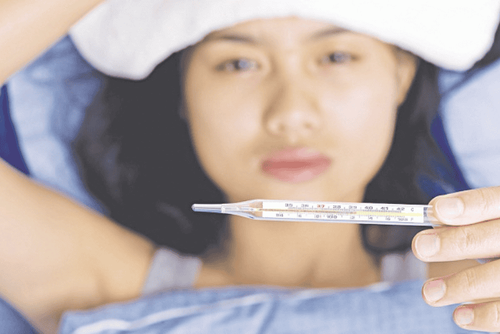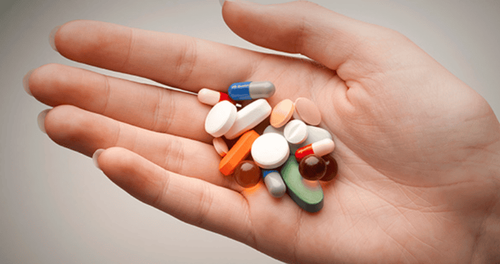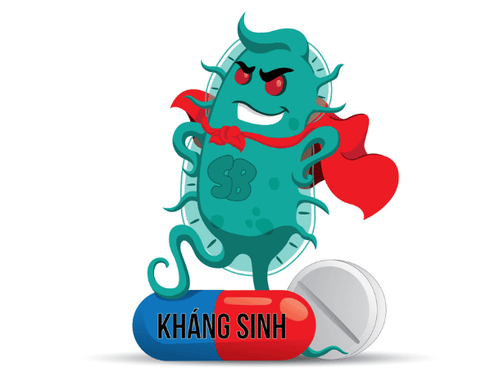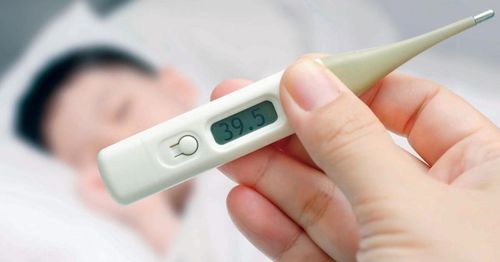This is an automatically translated article.
Blood culture is an important method in the diagnosis and monitoring of sepsis. In case you have a persistent fever of unknown cause or have any symptoms that suggest sepsis, it is best to visit a medical facility to see a doctor.
1. Time to take blood for bacteremia test
Blood can be drawn when the patient is feverish and before antibiotics are administered. Specifically:
For patients who are receiving fluids or blood, it is necessary to lock the infusion line and perform blood collection on the opposite hand. In case the patient has just finished eating, it is necessary to wait 2-3 hours before taking blood. If in the process of taking antibiotics, it is necessary to ask the patient to stop taking at least 24 hours before taking blood for testing.
2. Blood culture procedure
Before conducting blood culture, it is necessary to write all information of the patient on the culture bottle, including: Full name, age of the patient; Date and time of blood collection, treatment department. In case a patient has more than one culture bottle, it is necessary to specify the time of inoculation on the bottle body as well as the test sheet. The blood culture process is as follows:
Step 1: Use iodized alcohol to disinfect 2 times at the site to be drawn, then disinfect with alcohol 70 degrees in a spiral. If the first blood collection is unsuccessful, the needle needs to be changed and repeated (do not let the needle tip touch anything). For adults, the required blood volume for testing is 5-10ml, for children, 1-3ml and each person's specimen is stored separately. Step 2: Open the protective cap of the implant bottle and disinfect the rubber stopper with alcohol at 70 degrees, absolutely do not use alcohol iodide. Use a syringe to poke the needle through the rubber and inject the collected blood into the bottle, then shake gently to mix the solution inside. Step 3: Transfer the blood culture bottle along with the patient's test sheet to the Department of Microbiology as quickly as possible. In case the specimen has not been transferred, it should be stored at a temperature of 25 degrees Celsius, should not be kept in the refrigerator. For normal blood culture flasks, we can keep them in an incubator, and for blood culture bottles, they need to be kept at a temperature of 35 degrees Celsius in the automatic incubator. Both types need to be monitored daily.
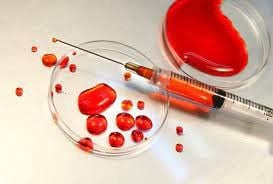
Cấy máu là 1 phương pháp quan trọng trong việc chẩn đoán và theo dõi bệnh nhiễm khuẩn huyết.
3. Bacterial culture process
The process of culturing bacteria is done as follows:
Step 1: It is necessary to check the blood vessels regularly. With conventional blood culture flasks, it is necessary to check twice a day at 7am and 3pm. When observing the blood vessel and seeing abnormalities such as: scum, turbidity, sediment at the bottom or suspended porous residue, it is necessary to conduct tests immediately to look for bacteria and fungi. With bottles included in the automatic blood culture machine, the buzzer will signal when there is a positive sample and display on the screen the location of that sample, the technician will take a blood sample at that location to perform a scan. probe, then conduct a test for bacteria and fungi through the following steps:
Shake the blood bottle well With a normal blood culture flask, it is necessary to conduct a smear by Gram staining method to look for bacteria (can be performed with a sterile pipette or culture rod), thereby determining their color and morphology. Finally, record the collected information in the test book.
As for the bottles in the automatic blood culture machine, the bottle cap must be disinfected, then wait for it to dry, use a syringe to suck the fluid as a specimen similar to a normal blood culture bottle.
Inoculate the appropriate medium based on Gram staining. With a conventional blood culture flask, pipette 1 ml or 1 loop of inoculum. With an automatic culturer, use a syringe to aspirate fluid.
In case of Gram-positive cocci, standing in clusters like bunches of grapes, inoculate TM plates with 1 Chapman tube at 35 degrees Celsius for 24 hours.
However, if it is a Gram-negative bacillus, it is necessary to carry out inoculation 1 TM plate with Macconkey plate and normal agar tube at 35°C for 24 hours.
If fungus is suspected, it is necessary to transfer to Sabouraud's medium and use 2 tubes (1 tube at room temperature, the other at 35°C) to monitor for 2-7 days.
For other cases, perform inoculation of 1 TM plate plus 1 plate of 5% CO2 chocolate agar at 35°C for 24 hours.
Step 2: Store in an incubator at 35 degrees Celsius for 24 hours, check again the next day. Perform Gram stain to see the color and shape of bacteria or fungi. In order to determine the biological properties, it is necessary to combine with appropriate chemicals and biological products. From there, we can identify the species and make an antibiogram.
Step 3: Immediately send the results to the clinician right after the antibiotic results are available.
If negative, the normal blood culture flask should be kept in the incubator for about 7 days (the bottle is in the automatic blood culture machine, the machine will report negative after 5 days) perform Gram staining and culture transfer. Observation after 24 hours that bacteria do not grow, the result is negative for sepsis, and the results obtained are returned to the clinician.
In summary, blood culture is used to determine the cause of sepsis, thereby building an antibiotic map. In case you have a persistent fever of unknown cause or have any symptoms that suggest sepsis, it is best to go to a reputable medical facility for a doctor to conduct a blood culture or do other necessary tests.
Currently, Laboratory Specialist - Vinmec International General Hospital is one of the leading prestigious addresses in the country, trusted by a large number of patients for medical examination and treatment. Thanks to the use of modern machines and equipment to test and analyze blood, Vinmec has provided accurate information on red blood cells, white blood cells, platelets, hemoglobin... Overall assessment of the health status of the person being tested, early detection of the disease, and timely treatment suggestions.
In particular, with a space designed according to 5-star hotel standards, Vinmec ensures to bring patients the most comfort, friendliness and peace of mind when visiting and receiving treatment at the hospital.
Please dial HOTLINE for more information or register for an appointment HERE. Download MyVinmec app to make appointments faster and to manage your bookings easily.




